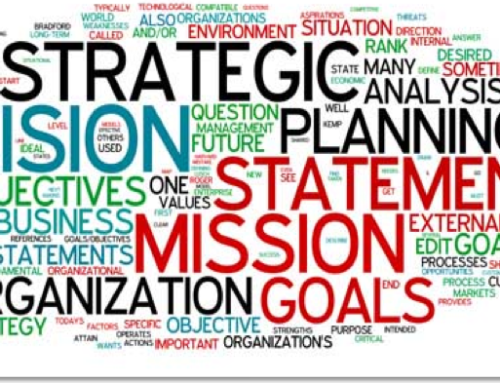 Guest Post by Rob Biesenbach
Guest Post by Rob Biesenbach
If there’s one principle that unites the PR and marketing community, it’s the age-old wisdom that “93 percent of all communication is nonverbal.” It’s all about your body language, right?
Image: José Luis Ruiz via Flickr, CC 2.0
Well, prepare to have your mind blown: that figure is a myth. But because so many people accept it as gospel, they tie themselves up in knots in presentations, job interviews, and other important moments.
Here’s what you need to know about body language.
Busting the 93% Myth
First, about that 93% figure. That’s a misinterpretation of an isolated laboratory experiment that was done more than 40 years ago. The study’s application to normal everyday communication between people in the real world has been widely debunked. Even the study’s author has practically begged people to stop misinterpreting his work:
“I am obviously uncomfortable about misquotes of my work. From the very beginning I have tried to give people the correct limitations of my findings. Unfortunately the field of self-styled ‘corporate image consultants’ or ‘leadership consultants’ has numerous practitioners with very little psychological expertise.”
Content Matters
To me, the biggest danger of the 93 percent theory is that it leads people to the misguided conclusion that what they say matters a lot less than how they say it:
- Giving a presentation? Dress up a bunch of hollow platitudes in some razzle-dazzle and give ”˜em the ol’ jazz hands!
- Going for a job interview? Mirror the interviewer’s gestures!
- Got a hot date? Lean in and twirl your hair!
Life is not quite that simple. The content of what you communicate is important. How important? Does it account for 50%? 72%? 35%?
Who knows? Trying to ascribe a specific percentage is a pointless exercise. Just know that content and delivery go hand-in-hand and you should focus on both.
Speaking of Myths
You’ve no doubt heard the advice that you should never, ever cross your arms””that’s a signal that you’re stubborn, defensive, and closed off. But sometimes it just means you’re cold. Or that you find it comfortable.
I do an exercise in my presentations where I talk for a moment with my arms crossed and ask the audience if I seem stubborn, defensive, or closed off. They inevitably say no. Why? Because of the words I’m using and the warm tone of my voice and the friendly expression on my face.
And that’s the whole point. We’re not dummies. We don’t judge random gestures in isolation””we look at the big picture.
So if you’re giving a presentation, don’t get too worked up over what to do with your arms, or whether you should or should not put your hands in your pockets.
It’s Intentions That Count
Concern yourself instead with your intention. Focus your energy on being confident, warm, and positive.
Communication expert and speech coach Nick Morgan puts it this way:
“[I]f you’re going to give a speech, decide beforehand that you’re thrilled to have the opportunity to present to this great group of people … think first about what the purpose of the interaction is, what you want to get out of it, and what your attitude toward it is. If you focus your emotions in this way, your gestures will take care of themselves.”
So focus your mind and your gestures will follow.
A Few Body Language Tips
Does this mean body language is unimportant? Of course not. But much of it is common sense.
Here are some basic things to pay attention to:
- Stand up straight when you’re presenting. It projects confidence and it also helps you project your voice.
- In meetings and interviews, sit up and lean forward. It shows you’re interested and helps keep you engaged.
- Whenever you’re talking to people, make eye contact. Nervous speakers often cheat by staring at a point over people’s heads. It’s very obvious when you do that and it makes you look shifty and untrustworthy.
- Speaking of shifty, don’t shift your weight from foot to foot like an angsty teenager. Plant your feet and own your space.
- Offer a warm smile, even when you’re talking on the phone. Obviously, that projects friendliness.
The great thing about all this is that it’s like a continuous feedback loop. The physical act of standing up straight not only makes you look confident, it helps you feel confident. Smiling can actually make you feel happy. Gesturing with your hands even helps trigger your thought process.
The science behind body language is fascinating, and there’s no shortage of information and experts on the topic if you want to learn more. Just give the stiff-arm to anyone who traffics in the “93 percent” myth.
 Rob Biesenbach is a veteran speechwriter, public speaker, actor and author. His new book, 11 Deadly Presentation Sins: A Path to Redemption for Public Speakers, was just released this week. You can find Rob on Twitter and on his blog.
Rob Biesenbach is a veteran speechwriter, public speaker, actor and author. His new book, 11 Deadly Presentation Sins: A Path to Redemption for Public Speakers, was just released this week. You can find Rob on Twitter and on his blog.
![[EVENT]: PR Hacks for Small Biz (online)](https://shonaliburke.com/wp-content/uploads/2021/06/FB-Ad-1200x800-01-01-01-Copy-500x383.jpeg)








Shonali RobBiesenbach kensviews martinwaxman blah2voila abbiefink Alas, I won’t be there this year :(
RobBiesenbach Me too!!! AAAAH!!!! kensviews martinwaxman blah2voila abbiefink the gang’s getting back!!!!
Shonali I know! I’m psyched to meet you and the rest of the gang!
RobBiesenbach HEY! I’m going to see you in May at #CAPRSA!!!
profkrg Thank you for sharing!
Hi this very nice post i like so much i have get lots of information about reading this blog please check this link :-) http://clapsnslaps.com/blog/crack-the-jack-with-clapsnslaps
leaderswest Thank you for sharing! shonali
Shonali Yes, the metronome effect! (I think someone else might have coined that — David Meerman Scott, perhaps?)
That’s some interesting, very specific feedback about the hands — I hadn’t heard that one, but it make sense. To me the key is to be natural. I expressed self-consciousness to a speaking coach about the way I gesture a lot and she said that that’s good — it means you’re human and natural and in the moment. I’ve seen coaches try to program people so specifically that it practically requires a protractor to get the angle of the arms right!
I’m sure there are many small adjustment that people could make, but I’d make sure they’re getting advice from a true expert, rather than someone who’s quoting “rules” from some book. And in your case, something that when you become aware of it, it makes sense to you, instead of feeling like a weird or unnatural adjustment to make.
That’s why I love Nick Morgan’s advice to take care of what’s going on internally, to focus on being positive and in the moment, and let the gestures follow from there. (Though he does have a lot more strong advice about the physical part, too.)
Here’s one habit I find very irritating and I make a conscious effort not to do it: when speakers/presenters walk up and down the stage like a pendulum. It drives me nuts. So does the weight-shifting thing, and also if their hands are constantly swinging by their sides, or doing something nervous and fidgety.
Some years ago, I did a workshop with the IABC chapter in Cleveland. commAMMO – who is a good friend – suggested that when I use my hands (which I can, quite a bit), I make a conscious effort to keep my fingers together, as opposed to splayed, because the former is more powerful. When I tried this in front of a mirror, I immediately saw what he meant. Do you have an opinion/position on what to do with one’s hands?
Great GP Rob. Thank you so much for sharing your smarts here!
Howie Goldfarb I didn’t notice, as I was staring at a random spot on the back wall instead of making eye contact!
I didn’t pay attention you were slouching @RobBiesenbach
shonali sherean Exactly!
shonali My pleasure! Thank you for the opportunity!
sherean NickKellet LOL!
RobBiesenbach Super GP for #WUL, thank you so much!
NickKellet shonali That won’t take long.